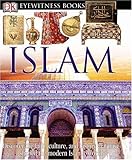
My husband handed me The Color of Magic with the phrase, "fluffy, light, entertaining." I took the hint and started reading. His description was apt. The reason he suggested I read it was he wondered if we should look for the other Discworld books by Prachett to add to our ever growing list of books to read. The consensus: I enjoyed it, but I feel no need to go out of my way to read any more Discworld books right now.
The Color of Magic is the first book in Prachett's well-known Discworld series. For fans of Piers Anthony Xanth novels, Prachett is similar. The world revolves around satire and the ridiculousness of our own world. My personal favorite anecdote in the entire book involved a very unique explanation of the Big Bang theory. As Prachett himself states, there is no map of Discworld. Its characters cover the gamut from trolls to vampires to living luggage. Death and Fate are two important characters. The book is funny. It is not deep. But it does poke fun at our own society. For all of those reasons its enjoyable. But, I didn't walk away having fallen in love.
My first introduction to Terry Prachett was through a book known in my house as "the rat book." In fact, it is actually entitled, The Amazing Maurice and his Educated Rodents. My mom had a classroom set when she taught Middle School and for the life of her could not understand who had purchased such a book for a school. I read it and had to agree. There was nothing wrong with it, but it did not fit the expected norm of American school educational text. After that introduction I was unsure of Prachett. But, the next book of his I read was a clear winner. I had been on a Neil Gaiman kick and read Good Omens co-written by Terry Prachett. I LOVED Good Omens. It is hysterical. And in reality there is a lot of similarity between Good Omens and The Color of Magic. They both use the supernatural to poke fun at the normal.
If you like Xanth and you're a fan of Good Omens; if you have a young teenager looking for something fun and light to read that has a large number of books in a series; if you want a fantasy beach read, I would definitely recommend The Color of Magic. If someone handed me the set, I would read them. But, I have other things I want to spend my book money on first.





